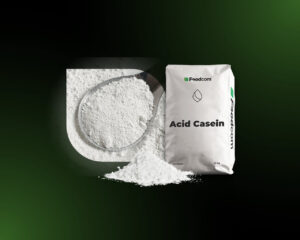March has begun, spring is in full swing. Well, okay, maybe the weather is a little off, but those are minor details. In any case, spring means barbecues. Barbecues mean ketchup and mayonnaise, whose manufacturers are making their last big purchases of raw materials before the season begins. Salt and sugar are also in great demand. This would not be surprising in the context of the outdoor gatherings mentioned above, but the question is: do you guys buy spices for your grills by the ton and by the truck?
Spring is also a time of awakening from hibernation for many animals. This is obviously also true for the feed market, where we see more and more movement. At the same time, many buyers or potential buyers are holding back on making and accepting offers until the price becomes more favorable.
Another pattern of buying behavior that is easy to see today applies to buyers who are interested in all products. Many come back to us after a week or two, having rejected our offer because they have not found a better one anywhere. We wonder what the reason for this is…
Vitamin C
Vitamin C is one of those commodities that definitely proves that the situation in the additive market is dynamic and can change in seconds. About 95% of the world’s Vitamin C production is in China. This makes China the country whose market situation is most closely followed by sellers and buyers. In recent years, this commodity has strengthened its position in the market. This trend is sure to continue in the coming years, mainly due to the numerous benefits that Vitamin C supplementation brings to humans and animals, as well as the growing awareness of healthy lifestyles.
Citric Acid
Trading in the Citric Acid market has intensified noticeably in recent weeks. Of particular interest is the anhydrous variety, which is currently difficult to find on the market. As a result, as you can easily imagine, the price is rising. Moreover, most of the production is concentrated in China, and manufacturers are competing intensively, especially on price.
Xanthan Gum
The availability of Xanthan Gum in the market is satisfactory. Both demand and prices are increasing as many buyers are looking for deals. A particularly intense movement in the market for Xanthan Gum can be seen in the technical grade. Inquiries have been received from manufacturers of adhesives and paints, among others.
Lysine HCL
It seems that few birds, especially poultry, go into hibernation. Most likely they don’t, but for some reason the poultry industry is waking up right now. Poultry feed manufacturers are eager to find Lysine. At the same time, we are seeing price pressure on all amino acids. As a result, the price of Lysine is also going up.
Threonine
Threonine is another raw material used in the production of animal feeds, which has seen increased movement in the market recently. Like Lysine and other amino acids, Threonine is under price pressure, leading to an increase in its price.
What else?
Europe
Evonik representatives expect methionine relief
The last quarter of 2022 was a headache for Evonik because of falling prices for methionine, whose production costs remained relatively high. However, according to company representatives, the future looks bright, mainly thanks to falling gas prices. Cheap gas is the dream of many today, it’s hard to argue with that.
Next year, a huge plant will be built in Spain to produce… mealworms
Tebrio, a Spanish company that produces insect proteins, has obtained the final necessary licenses and European Union approval to start the huge project. The plant, which specializes in mealworms, is to be built in Salamanca on an area of 90,000 m2. It is expected to produce up to 100,000 tons/year. So, insect proteins are the future?
Bird flu is definitely not just bird flu anymore
Reports have surfaced that an outbreak of so-called avian influenza has been detected in red foxes near Paris. The situation regarding the epidemic of this disease is becoming more and more worrying as it is spreading rapidly, not only among birds. Cases have already been detected in minks in Spain, foxes and otters in the United Kingdom, sea lions in Peru and grizzly bears in the United States and, worst of all, in humans in Cambodia.
The Americas
Brazil asks China to amend the mad cow disease health protocol
The Brazilian government wants to resume beef exports to China in the coming days, and therefore plans to ask for an amendment to the protocol that led to a ban on beef exports. It was introduced after a case of mad cow disease was discovered a few weeks ago. The Brazilian side argues that it would be quite sufficient to ban beef exports from a specific region or state, and a nationwide ban is not necessary.
The Argentine farmers are a little dissatisfied
Just kidding, they are very upset, which is why there were protests a few days ago. The reason for the discontent is the ongoing economic collapse as well as the worst drought in 60 years. Farmers believe that the government is not up to the challenges of the difficult situation. They are demanding that those in power adopt less interventionist trade policies and abolish export taxes. Their dissatisfaction is hardly surprising.
The U.S. will tighten regulations on water pollution in meat factories
The U.S. Environmental Protection Agency plans to update its regulations on water pollution in slaughterhouses for the first time in nearly two decades. This is not their own idea – they were ‘inspired’ by a lawsuit filed by environmental activists who believe the current regulations are inadequate. The problem is serious because wastewater from meat plants can both harm the environment and poison drinking water.
Asia & Oceania
Feed production in Kazakhstan’s Zhetys region is about to increase
Work is underway on several livestock investments in the southeastern Zhetys region of Kazakhstan. These projects include at least four feedlots for dairy and/or beef cattle and a compound feed plant with a capacity of 1,000 tons per year. The aim of the new investments is to support agriculture in the region and improve the situation of its inhabitants.
Indonesia’s biodiesel policy will be crucial for the palm oil market
Indonesia has increased the mandatory blending of palm oil in biodiesel to 35% from February, up from 30% previously. The goal of this change is to reduce diesel imports in the face of high global energy prices and to reduce emissions. These policy decisions, combined with weather anomalies, have led experts to predict a price increase and shortage of palm oil around the world.
Singapore lures producers of lab-grown meat
Singapore allowed the consumption of lab-grown meat two years ago, prompting many companies to move their operations there. However, mass production has not yet begun. The reason for this is mundane: under current circumstances, production costs are very high and often exceed the price of the final product. Apparently, we still have to wait for the lab feast…







